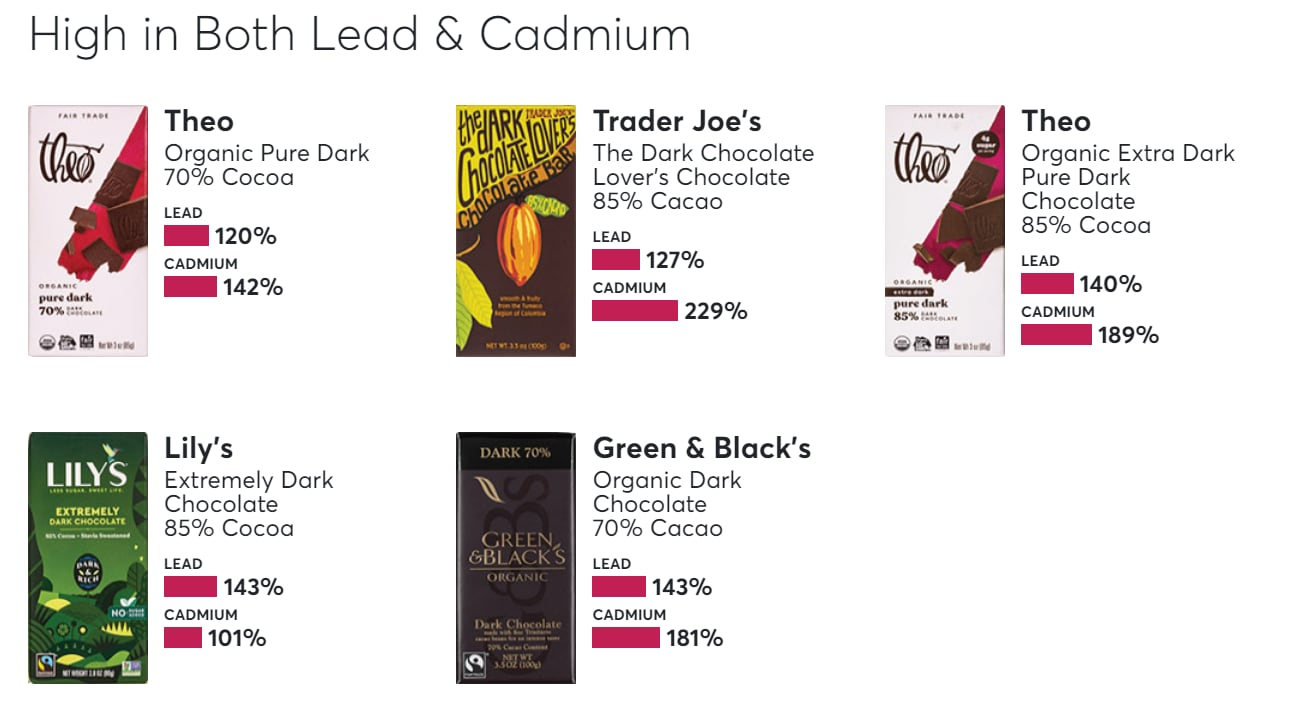Over-exposure to heavy metals is known to cause health issues with respiratory organs, can lead to cancer and cause memory loss, but medical experts advise that a consumer would have to eat more than an entire sharing-sized chocolate bar per day to notice any effect.
Cadmium is a natural element found in soil that is absorbed by the roots of the cocoa plant in certain growing regions and ends up in cocoa beans. Lead contaminates the beans through the environment, possibly when it is blown by the wind in the surrounding areas as the beans dry in the open.
In a statement, the NCA said: "Chocolate and cocoa are safe to eat and can be enjoyed as treats as they have been for centuries.
“The California Office of Environmental Health Hazard Assessment (OEHHA) guidelines cited in the Consumer Reports study are not food safety standards. An expert investigation conducted through our prior California Proposition 65 settlement concluded that cadmium and lead are present in cocoa and chocolate due to soil and that bean cleaning during processing cocoa beans reduces lead and cadmium in chocolate products.
“The products cited in this study are in compliance with strict quality and safety requirements, and the levels provided to us by Consumer Reports testing are well under the limits established by our settlement. Food safety and product quality remain our highest priorities and we remain dedicated to being transparent and socially responsible."
Consumer Reports, an independent, non-profit member organization, said it ‘works side by side with consumers for truth, transparency, and fairness in the marketplace,’ tested a mix of brands, including smaller ones, such as Alter Eco and Mast, and more familiar ones, like Dove and Ghirardelli.

For 23 of the bars, eating just an ounce a day would put an adult over a level that public health authorities and CR’s experts said may be harmful for at least one of those heavy metals.
Five of the bars - Trader Joe's Dark Chocolate Lover's 85% cacao, Green and Black's Organic dark chocolate 70% cacao, Lily's extremely dark chocolate 85% cocoa and two bars made by Theo's were above those levels for both cadmium and lead.
The danger is greatest for pregnant people and young children because the metals can cause developmental problems, affect brain development, and lead to lower IQ, said Tunde Akinleye, the CR food safety researcher who led the testing project.
“But there are risks for people of any age,” he said. Frequent exposure to lead in adults, for example, can lead to nervous system problems, hypertension, immune system suppression, kidney damage, and reproductive issues. While most people don’t eat chocolate every day, 15% do, according to the market research firm Mintel.
“Even if you aren’t a frequent consumer of chocolate, lead and cadmium can still be a concern. It can be found in many other foods—such as sweet potatoes, spinach, and carrots—and small amounts from multiple sources can add up to dangerous levels. That’s why it’s important to limit exposure when you can.”
Safer products
However the report is not recommending to stop eating chocolate completely. Akinleye said that while most of the chocolate bars in CR’s tests had concerning levels of lead, cadmium, or both, five of them were relatively low in both. “That shows it’s possible for companies to make products with lower amounts of heavy metals—and for consumers to find safer products that they enjoy.”
Andrew Stolbach, a medicine toxicologist at Johns Hopkins clinic said when chocolate is consumed in moderate amounts, the lead and cadmium levels are nothing to worry about.
"The safety levels for lead and cadmium are set to be very protective, and going above them by a modest amount isn't something to be concerned about," he said. "If you make sure that the rest of your diet is good and sufficient in calcium and iron, you protect yourself even more by preventing absorption of some lead and cadmium in your diet."
A joint report by the As You Sow, a non-profit promoting corporate social responsibility, and the NCA was published in August this year after a three-year study into cadmium in cocoa.
The researchers found that cadmium in cocoa beans naturally comes from the soil and is directly transported to the beans by the cocoa tree. Lead contamination occurs post-harvest, when wet cocoa beans are exposed to soil and dust during the drying, fermenting and transport phases.
"The industry should communicate to farmers the value of implementing Better Agricultural Practices related to reducing wet cocoa bean contact with soil during fermentation and drying," the report reconmend. "Drying wet beans in direct contact with the ground, road surfaces, and concrete patios should be discontinued as a farmer controllable Pb (lead) reduction activity."
Reducing wet cocoa bean contact with soil and dust can lower lead in chocolate by 10% to more than 25%, the report experts discovered.
Other ways to reduce heavy metal levels include blending high cadmium content cocoa beans with those with lower levels, identifying areas of contamination, and conducting more robust testing, according to the report's findings.
A spokeswoman for the FDA said: "The FDA monitors and regulates levels of environmental contaminants, including lead and cadmium, in foods. If the agency finds that the level of a contaminant causes the food to be unsafe, we take action, which may include working with the manufacturer to resolve the issue and taking steps to prevent the product from entering, or remaining in, the US market."
Sources:
https://www.consumerreports.org/health/food-safety/lead-and-cadmium-in-dark-chocolate-a8480295550/
https://www.npr.org/2022/12/17/1143239430/dark-chocolate-lead-cadmium-consumer-reports

